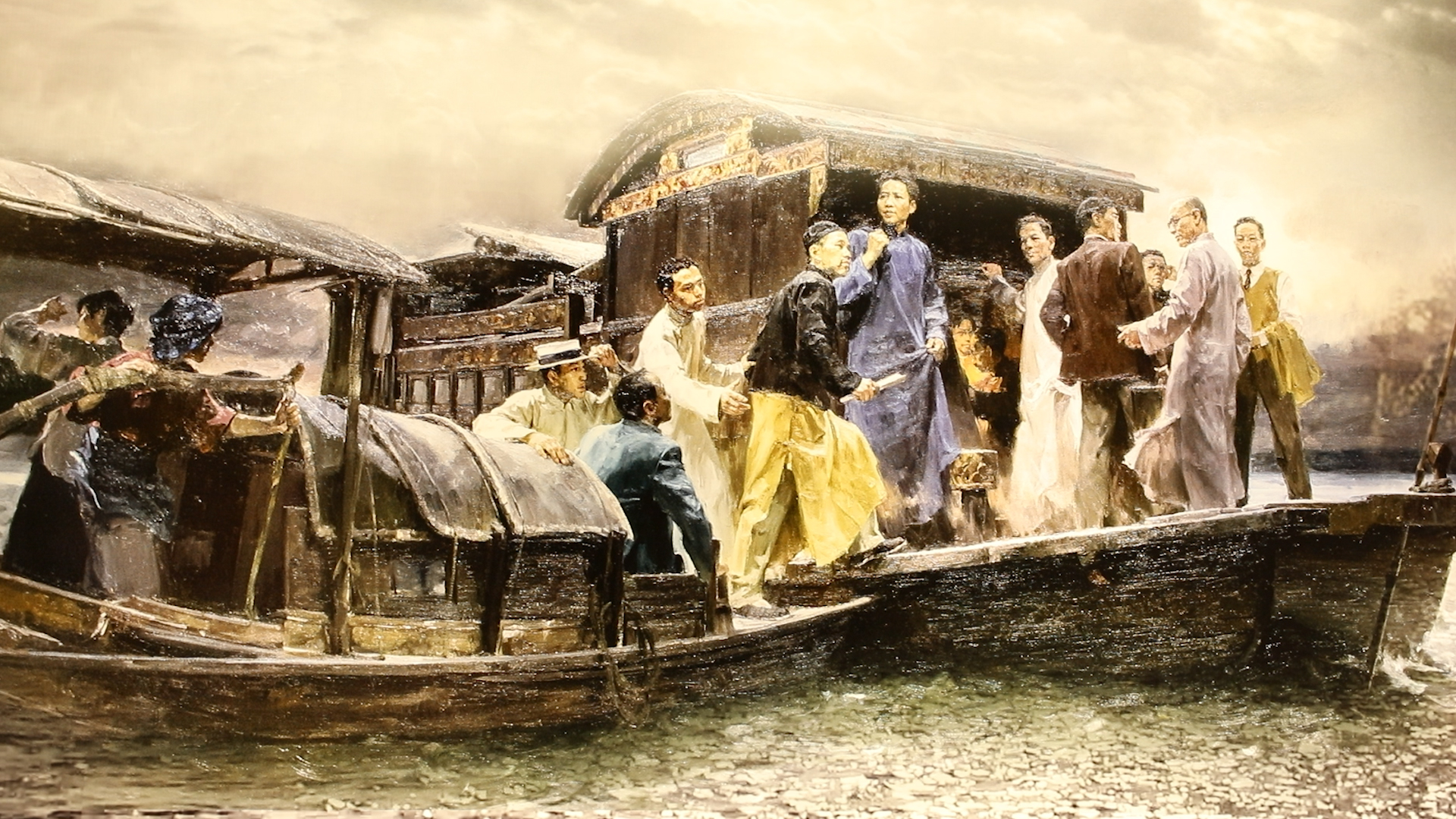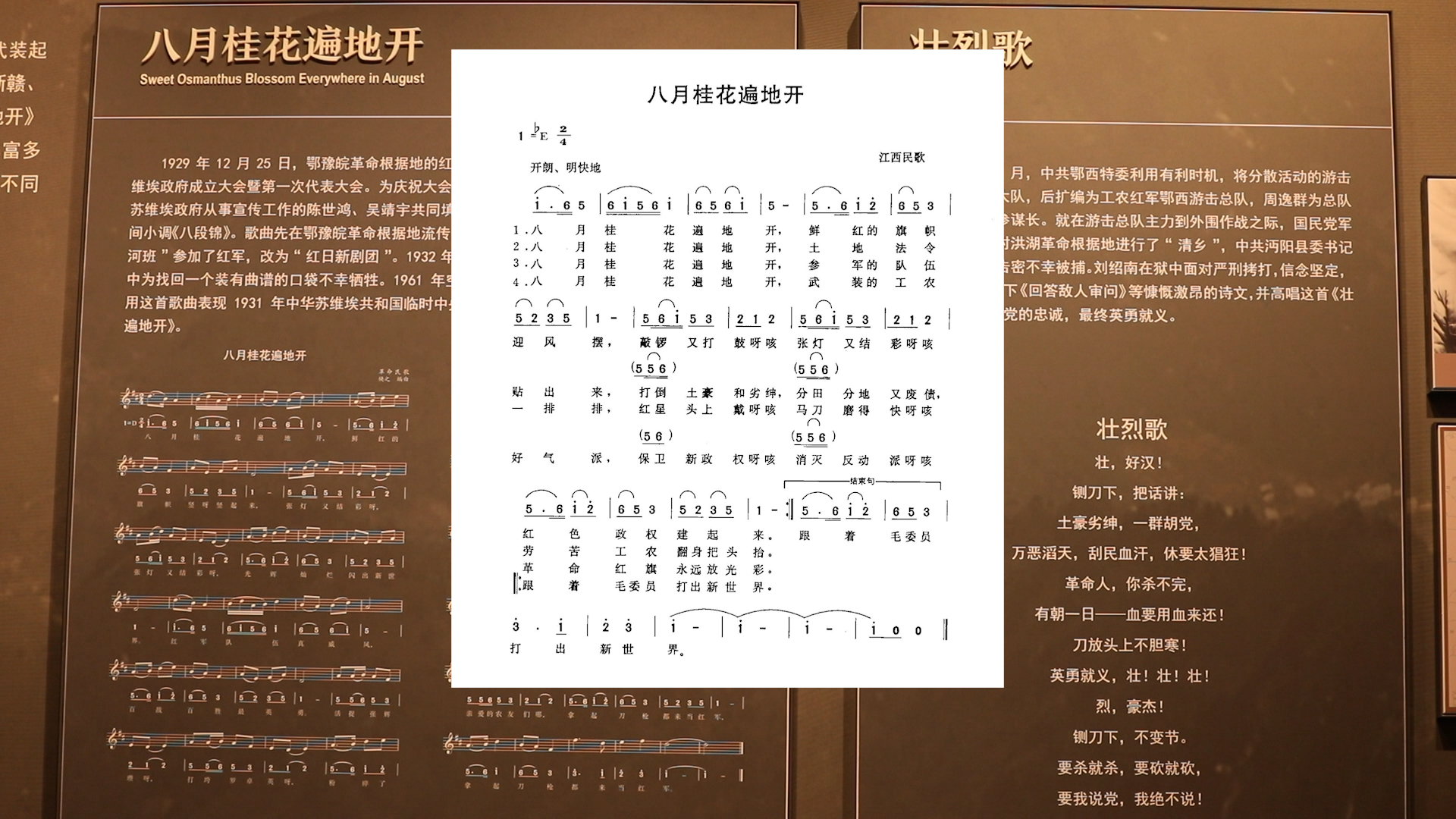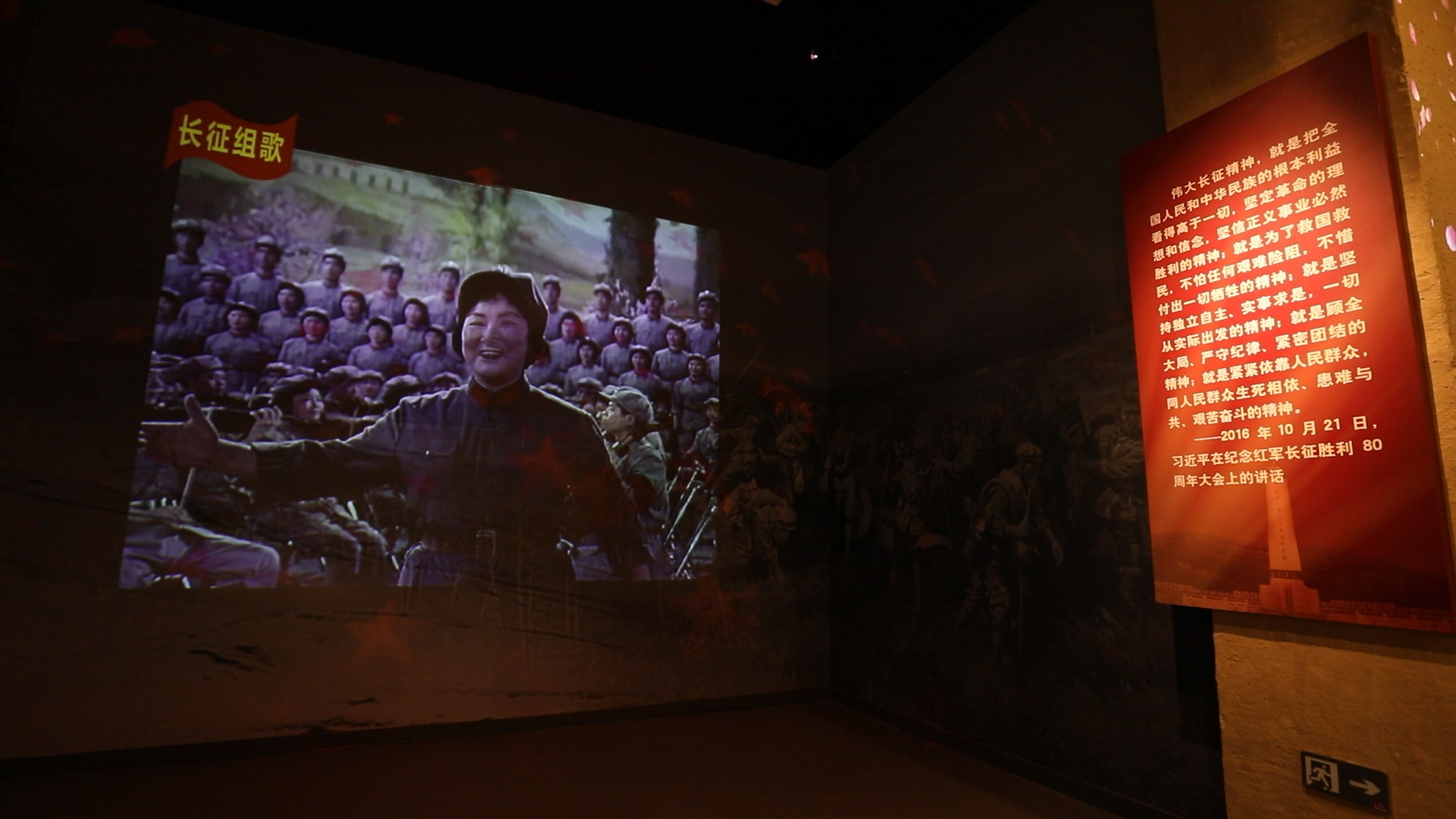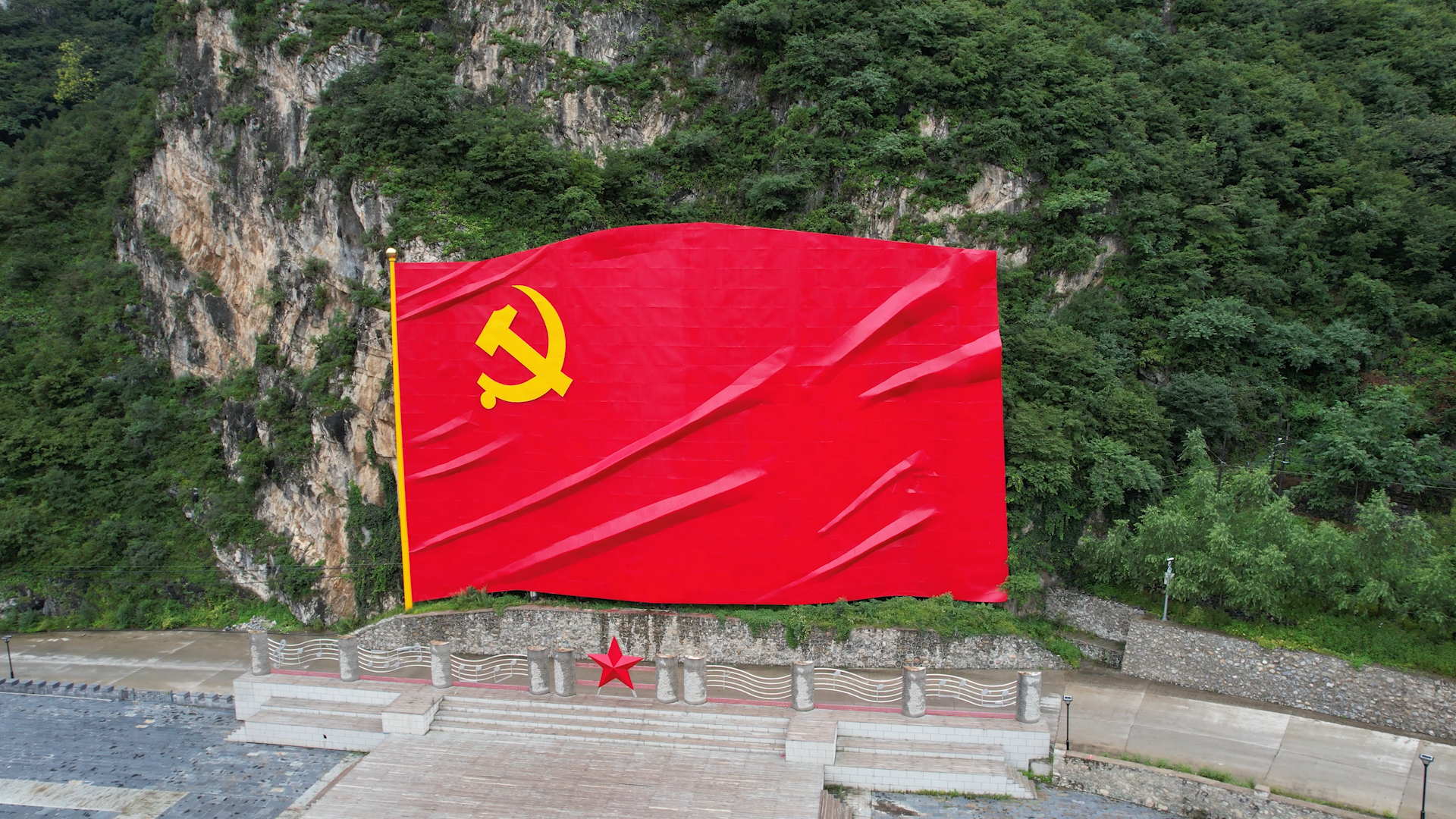红歌:人民的心声 历史的旋律
红歌:人民的心声 历史的旋律
Red songs: Telling history through music
世界上每个民族的每段历史,总有音乐作为记录。在近百年来的中国,有这样一种特殊的歌曲——红色革命歌曲,凝聚着中华民族从危亡走向新生,再迈向辉煌的厚重历史。
Each nation in the world has music recording its different historic eras. China is no exception. During its recent one hundred years, a special type of songs – the red revolutionary songs - reflect the part of history as the Chinese nation in peril was reborn and marched to glory.

1921年,中国共产党第一次全国代表大会在浙江嘉兴南湖的一条船上召开,翻开了中国革命新的一页。1984年,张士燮、乔羽、时乐蒙共同创作了歌曲《南湖的船,党的摇篮》,南湖的船,承载着“立党为公、忠诚为民的奉献精神”,被誉为党的摇篮。
In 1921, the Communist Party of China (CPC) held its first national congress on board a boat on Lake Nanhu in Jiaxing, Zhejiang province, marking a new beginning of the Chinese revolution. In 1984, Zhang Shixie, Qiao Yu and Shi Lemong jointly wrote the song the Boat on Nanhu Lake, the Cradle of the CPC. The small boat embodies the CPC’s commitment to serving the public good and exercising power in the interests of the people, therefore, becoming an icon in the history of the CPC.
1927年,中国共产党发动南昌起义,打响了武装反抗国民党反动统治的第一枪。这一声枪响,标志着中国从此有了一支为人民求解放、谋福利的人民军队。南昌起义不久后,南昌传出一首《八一起义》的民谣,老百姓唱出“我快活笑嘻哈!”,表达了对起义的拥护。
In 1927, the CPC launched the Nanchang Uprising and fired the first shots of armed resistance against the reactionary rule of the Kuomintang. This led to the creation of an army that worked for the liberation and wellbeing of Chinese people. Shortly after the uprising, a folk song August 1st Uprising spread from the city of Nanchang. With lyrics like “I laughed merrily,” the song expresses ordinary people’s support for the uprising.

随后几年,中国共产党在全国多地建立了革命根据地。《八月桂花遍地开》是一首源自革命根据地大别山的民歌,采用民歌《八段锦》的曲调,为当地军民所喜闻乐见。后来,这首歌伴随着红军的足迹传遍了大江南北。
In the following years, the Communist Party of China established revolutionary bases in many parts of the country. One such revolutionary base in Dabie Mountains provided inspiration for a song titled Sweet Osmanthus Blooming Everywhere in August which adopted the melody of a folk song and became very popular among local army men and civilians. The Red Army later marched across the country to the accompaniment of the song.

1934年10月至1936年10月,中国工农红军进行了史无前例的长征。《红军战士思念毛泽东》《渡金沙江胜利歌》《到陕北去》等歌曲以艺术的形式再现了长征艰难的历程。
The two years from October 1934 to October 1936 witnessed the unprecedented Long March, a military retreat undertaken by the Chinese Workers’ and Peasants’ Red Army to evade the pursuit of the Kuomintang army. The difficult journey was later brought to life by such songs as The Red Army Soldiers Think of Mao Zedong, Ode to the Victory of Crossing the Jinsha River, and Go to Northern Shaanxi.
1935年,陕甘革命根据地形成,为中共中央、中央红军提供了落脚点。这一带,信天游、花儿风格的曲目独树一帜。歌曲《山丹丹开花红艳艳》以陕甘民歌作为表现形式,“滚滚的米酒捧给亲人喝,知心的话儿飞出心窝窝”,歌词深情、曲调高亢。同时描绘了一段重要的革命历史——中央红军到达陕北,从此之后,中国革命的重心从南方移到了西北。
In 1935, the Shaanxi-Gansu Revolutionary Base was established, providing a secure foothold for the CPC Central Committee and the Central Red Army. This part of the country is noted for Xintianyou and Hua’er, two popular folk tunes. The song Red Morningstar Lilies Are in Blossom uses the Shaanxi and Gansu folk tune as its form of expression. "With warm rice wine we treat the people we love, and together we have straight from the heart chats…” read the lyrics. The words are touching and the singing is sonorous. At the same time, the song depicts an important moment in China’s history: With the arrival of the Central Red Army in northern Shaanxi, the focus of the Chinese revolution shifted from south China to the northwest.

1943年,中国正遭遇日军侵略,但已见到胜利的曙光。19岁的曹火星来到堂上村开展群众文艺活动进行抗日宣传。在这段时间,他创作的歌曲《没有共产党就没有中国》唱出了广大人民的心声,并随着抗战胜利传遍全中国。新中国成立后,毛泽东主席提出应该在“中国”前面加一个‘新’字,后来,这首歌的名称也就正式定为《没有共产党就没有新中国》。
In 1943, the Chinese people were still suffering from the Japanese invaders, but victory was on the horizon. Cao Huoxing, then 19 years old, was working at Tangshang village to raise local residents’ awareness about the anti-Japanese war through mass cultural activities. During this period of time, he created the song titled Without the Communist Party There Would Be No China, which resonated with masses and soon became a household name when China won the war of resistance against Japanese aggression. After the founding of the People's Republic of China, Chairman Mao Zedong proposed that the word "new" should be added before "China." The song was therefore officially renamed as Without the Communist Party There Would Be No New China.

红歌里有民谣民歌,有诗词故事,它被不同地域、不同时代的人们传唱,唱出了人民的心声和历史的旋律。
Red Songs take different forms including folk songs and ballads, poetry and stories. They are popular in different regions and among different generations of people. They represent the common aspirations of the Chinese people and the rhythms of history.










